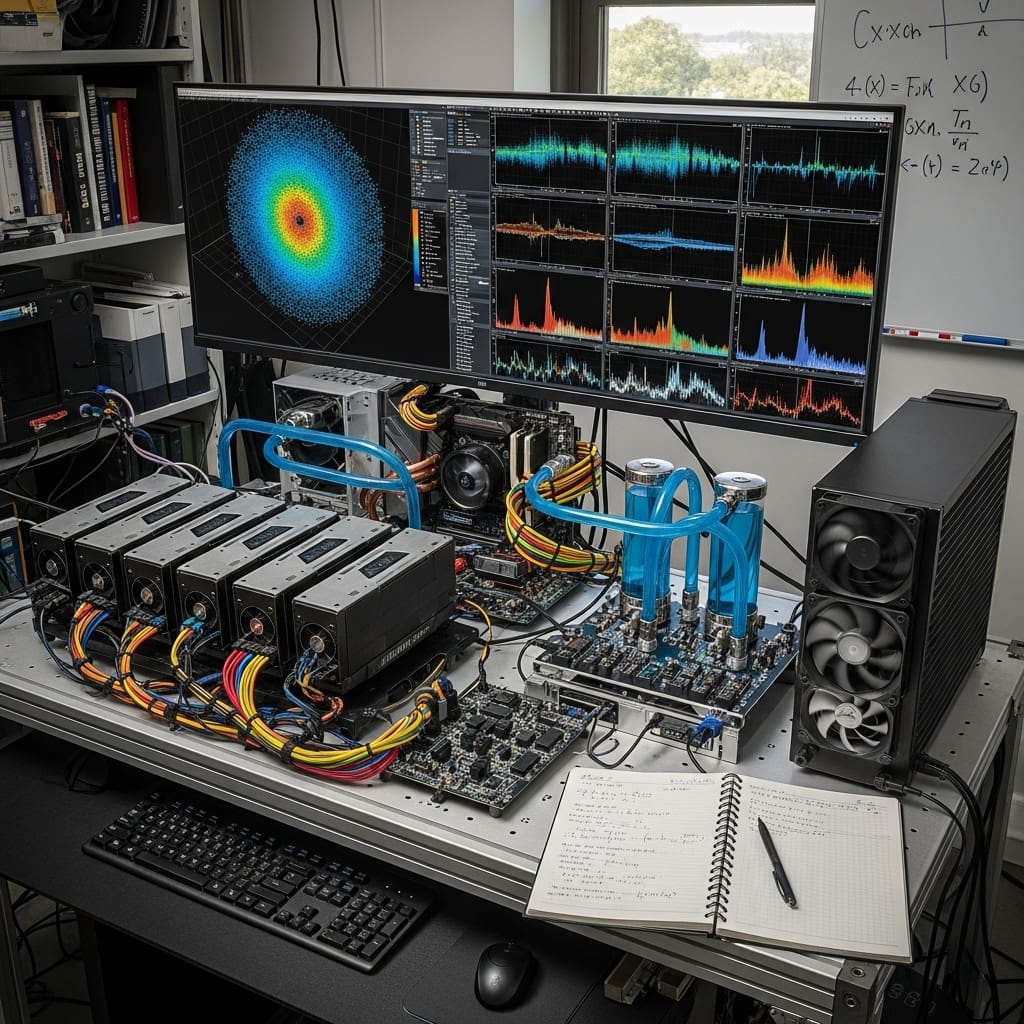The enduring quest to understand the universe’s earliest moments drives investigation into hypothetical particles like magnetic monopoles, predicted by many theories of particle physics. Mark Hindmarsh, from the University of Helsinki and the University of Sussex, Asier Lopez-Eiguren of the University of the Basque Country, Riikka Seppä from the University of Helsinki, and David J. Weir, also from the University of Helsinki, present detailed numerical simulations that explore the behaviour of these monopoles as the universe expands. Their work addresses a long-standing problem, namely whether the predicted abundance of monopoles is compatible with observations of the cosmos, and reveals that monopoles efficiently annihilate each other during the radiation-dominated era, maintaining a constant density fraction. This finding supports earlier theoretical models and provides a crucial step towards understanding the role of these exotic particles in the evolution of the universe, paving the way for more complex simulations that incorporate interactions with the surrounding plasma.
Cosmic String and Domain Wall Dynamics
This research explores the dynamics and potential observational signatures of topological defects, specifically cosmic strings and domain walls, which may have formed during phase transitions in the early universe. These defects, arising from symmetry breaking, could have played a role in the formation of large-scale structures and may be detectable through various astronomical observations. The research combines theoretical calculations, detailed numerical simulations, and considerations of existing observational data to understand their properties and potential impact. Topological defects are stable, localized disturbances in the fabric of spacetime, and their formation is linked to the cooling and evolution of the early universe.
Cosmic strings are one-dimensional defects, while domain walls are two-dimensional, and their interactions create complex networks. Understanding the evolution of these networks is crucial for predicting their observable effects, such as gravitational waves. Scientists are exploring several avenues for detection, including gravitational wave detectors like LIGO and Virgo, observations of the cosmic microwave background, pulsar timing arrays, and direct detection experiments. The authors rely on sophisticated numerical simulations to model the evolution of these defect networks and calculate their expected observational signatures.
These simulations require advanced techniques to handle the complex physics involved and accurately capture the energy scale of the defects. The research makes key contributions, including detailed modeling of defect networks, accurate calculations of the expected gravitational wave spectrum, and exploration of a range of different scenarios for defect formation and evolution. The team compares their theoretical predictions with existing observational data, assessing current constraints on defect properties and identifying promising avenues for future searches. They emphasize the importance of a multi-messenger approach, combining observations from different sources, gravitational waves, the cosmic microwave background, and cosmic rays, to obtain a more complete understanding of the defect landscape. This research is significant because it addresses fundamental questions about the early universe, connects cosmology with particle physics, and contributes to the growing field of gravitational wave astronomy.
Monopole Annihilation Maintains Constant Density Fraction
Scientists initiated a series of numerical studies simulating the dynamics of ‘t Hooft-Polyakov monopoles, hypothetical particles formed after a phase transition in the early universe. These simulations focused on a gas of monopoles in a background of radiation, excluding direct interactions between the monopoles and the radiation. The simulations reveal that monopoles efficiently locate and annihilate each other, maintaining a constant density fraction, supporting earlier theoretical predictions. However, the density fraction decreases logarithmically as the simulations progress, indicating the need for further investigation into the influence of the thermal environment and its potential to reduce the annihilation rate over time.
Measurements demonstrate that the simulations consistently evolve towards a specific monopole density fraction, confirming the predictions of previous work when plasma interactions are not considered. Researchers also investigated how the Coulomb force, governing interactions between monopoles and antimonopoles, might be modified in an expanding universe. Their results are consistent with no such modification, as evidenced by a stable point in the evolution of the dimensionless mean separation and velocity variables. Analysis of alternative modifications revealed progressively less stable points, suggesting that one earlier proposed model does not produce a stable configuration.
The velocity one-scale model was employed to describe the large-scale motion of the monopole network, defining a characteristic length scale related to the energy density. The simulations show that the RMS velocity obeys an equation incorporating damping effects from friction and a force term related to the magnetic Coulomb force between monopoles within the cosmological horizon. These detailed simulations provide crucial data for understanding the behavior of monopoles in the early universe and refining theoretical models of their formation and annihilation.
Monopole Dynamics in Expanding Early Universe
This research presents the first simulations of the dynamics of ‘t Hooft-Polyakov monopoles in the early universe, undertaken to test theoretical models describing their behaviour. The simulations investigated velocity one-scale models, which predict how a gas of monopoles evolves in an expanding universe, focusing on the influence of Coulomb attraction between monopoles. By recasting the governing equations into a simplified, dimensionless form, scientists identified stable states in both the radiation and matter eras of the early universe. The results demonstrate that, in the radiation era, the simulations support a constant density fraction of monopoles, aligning with predictions from one theoretical model.
In the matter era, the simulations show a logarithmic decrease in density fraction, again consistent with theoretical expectations. Analysis of different model parameters revealed evidence for a stable point in the radiation era when a specific parameter value was used, although further investigation is needed to conclusively differentiate between models. The team found no evidence for a stable point when using the minimum proposed value for this parameter. The authors acknowledge that the simulations were limited by their dynamical range, hindering a definitive comparison between the different theoretical models. Future work should extend the range of the simulations to better distinguish between these models and refine understanding of monopole behaviour in the early universe. This research provides a crucial foundation for further exploration of these fundamental particles and their role in cosmology.

